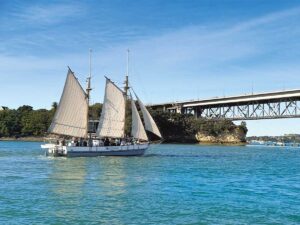‘Unexpected’ would be an appropriate single-word description of Lake Manuwai. For one thing, the tree-fringed lake looks like it would be more at home in Canada or the US than in the Bay of Islands.
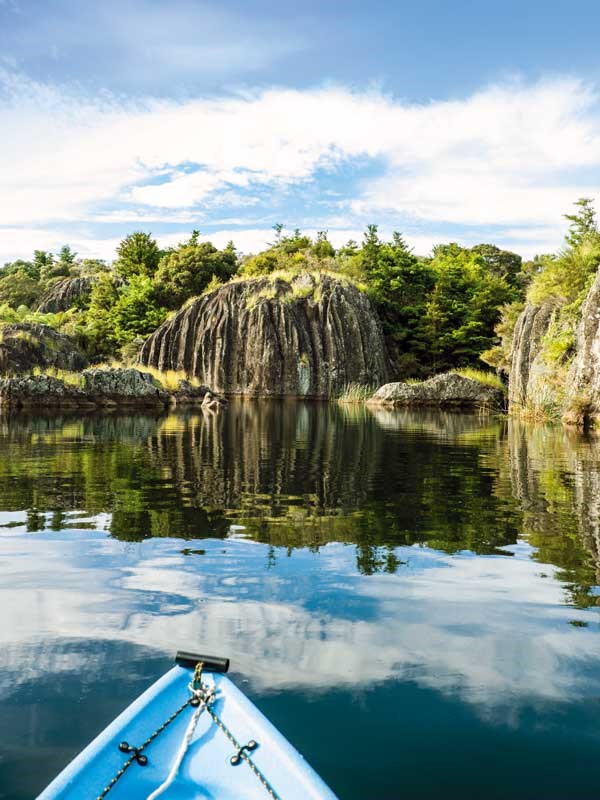 |
Kayaking inside the chambered rock formations is a unique experience |
And then there are fluted rock formations that are unique as well as unexpected. There’s a lot to discover in this surprisingly beautiful spot.
About Lake Manuwai
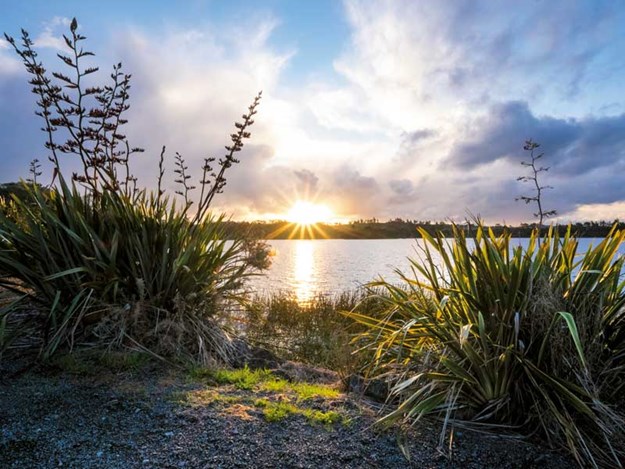 |
Lake Manuwai is a great place to park up, picnic, and watch the sun go down |
Situated north of Waipapa, near Kerikeri, Lake Manuwai is a man-made irrigation lake. The former Ministry of Works created it in 1982, and it’s one of the reservoirs that sustains Kerikeri’s horticulture industry. Kerikeri Irrigation Co now owns Lake Manuwai and an easement for Far North District Council means everyone gets to enjoy this stunning spot.
Kayaks, waka ama, sailing dinghies, and radio-controlled yachts are regularly seen on the water. But it’s certainly not a busy place, and you may even be lucky enough to have the lake all to yourself. Even if you do have to share the lake, it measures 144 hectares at maximum water level, so there’s plenty of room for everyone.
Kayaking on the lake
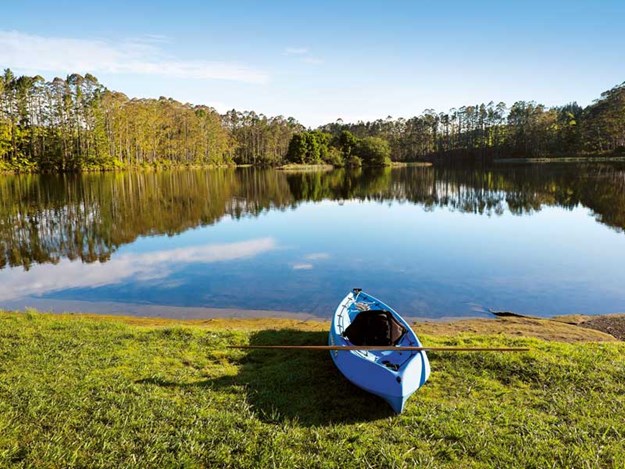 |
A carpeted ramp offers scratch-free launching and landing |
Launching your kayak is easy: look for the carpeted ramp alongside the big metal shed. And being a lake, you don’t have to worry about the tide or swell. The only factor affecting water levels here is the climate: the lake is fuller in winter than in summer, which makes it a great year-round paddling spot.
So, where do you go once you’ve launched your boat? You could circumnavigate the lake and meander around the man-made islands. Or—do as the locals do—and paddle to the northwestern shore where you’ll discover stunning fluted rock formations.
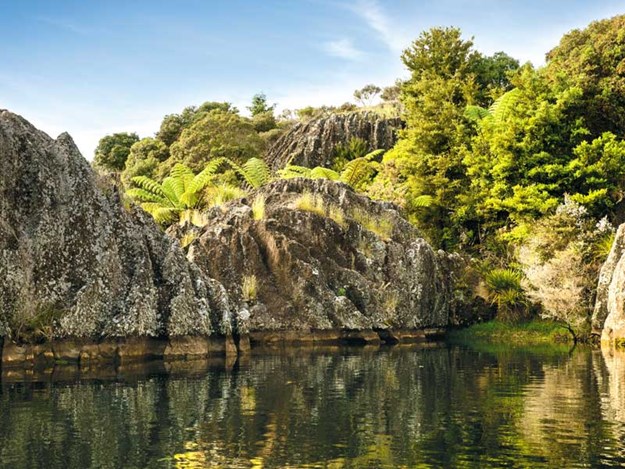 |
There are many alcoves and chambers to discover |
Be sure to get up close to these rocks, and you’ll see you can actually paddle inside an enclosed basin that resembles a watery dragon’s lair. But this is just the outer chamber; there are also inner alcoves to discover.
What’s really unexpected is that there are two sets of chambered rock formations and basins along this shore. It’s a wonderful place to explore, and it’s all too easy to lose track of time among these ancient volcanic rocks. Just watch out for submerged trees and boulders shrouded in the dark water.
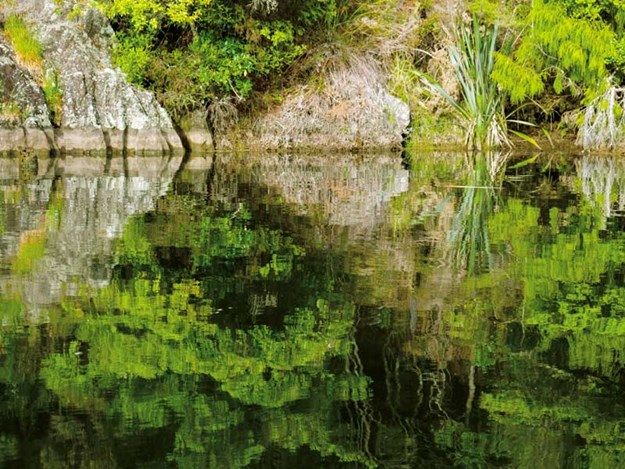 |
Stunning reflections in the water on a calm day |
Geologist Dr Bruce Hayward described the formations as, “One of two best developed and most extensive examples of fluted basalt proto-karst in New Zealand and possibly in the world.” And they certainly are impressive: the fluted rocks range from five to 10 metres in height, and kayaking in a basin surrounded by these cliffs and boulders really is a spectacular and most unexpected experience.
Even if you don’t intend to kayak on Lake Manuwai, it’s still worth a visit. Park up and enjoy a picnic and a cuppa. You might even get to enjoy an unexpectedly beautiful sunset over
the water.
What’s with the wooden kayak paddle?
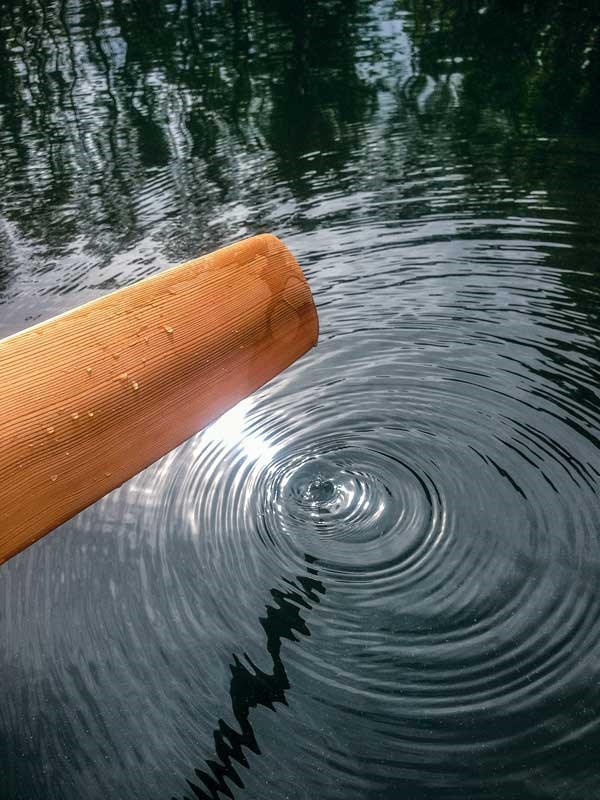 |
Timber Greenland kayak paddles are gentle on your joints and body |
If you’re wondering about the wooden kayak paddle in the photos, it’s a Greenland paddle. Devised by the Inuit, who also invented kayaks, the paddle is hydrodynamically shaped and therefore has more traction.
In other words, it lets you kayak further and faster, with less effort. Plus timber is more yielding, which means less effort is exerted on joints. The wooden paddle pictured is custom made by MaxPaddles.
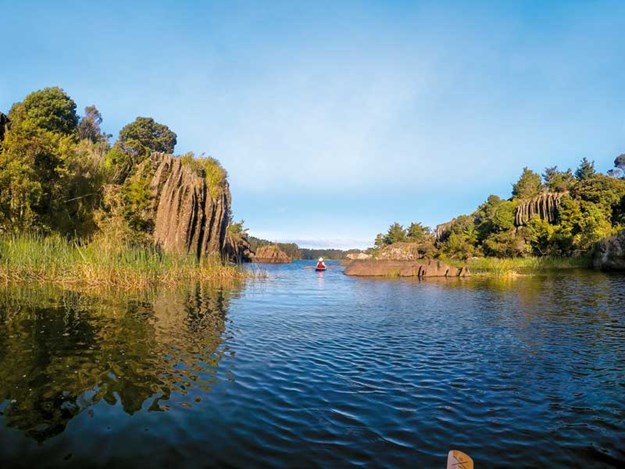 |
Even if you don’t intend to kayak on Lake Manuwai, it’s still worth a visit |
As a frequent kayaker, I’m prone to wrist injuries when kayaking, but this paddle provides a comfortable paddling experience.
Travel tips
- Lake Manuwai is at the end of Sandy’s Road, off State Highway 10. The road is tar-sealed except for the last 200 metres and parking area, which is gravel.
- Even though the lake is reasonably sheltered, do check the weather forecast and take the usual safety precautions before you go paddling.
- Overnight parking, dogs, fires, alcohol, and motorised boats are not permitted at Lake Manuwai. But you are allowed to swim, kayak, row, sail, picnic, and use a gas barbecue.
- On rare occasions, access to the lake is closed. Check keriirrigation.co.nz for any notices. The website also has information on water levels.
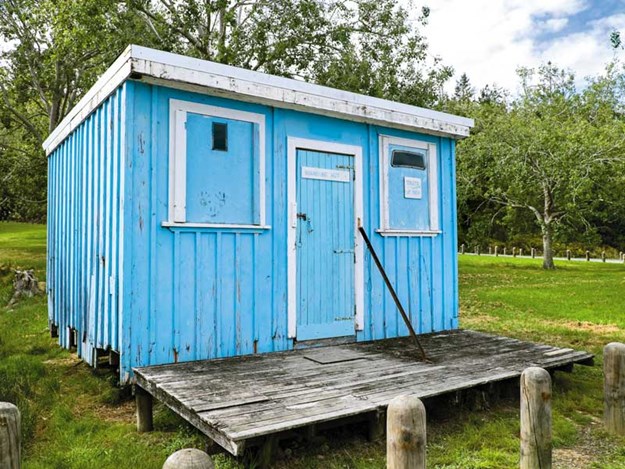 |
Facilities at the lake are basic, with just a changing hut and portaloo |


